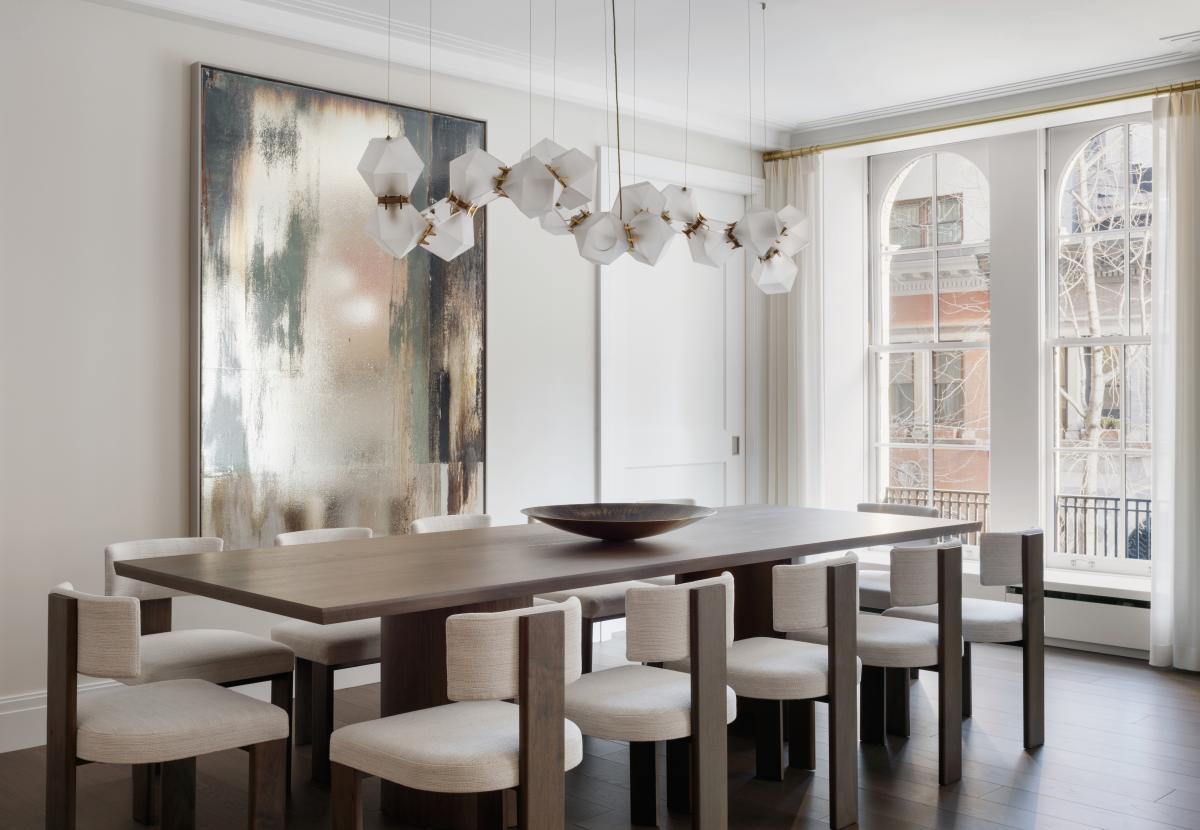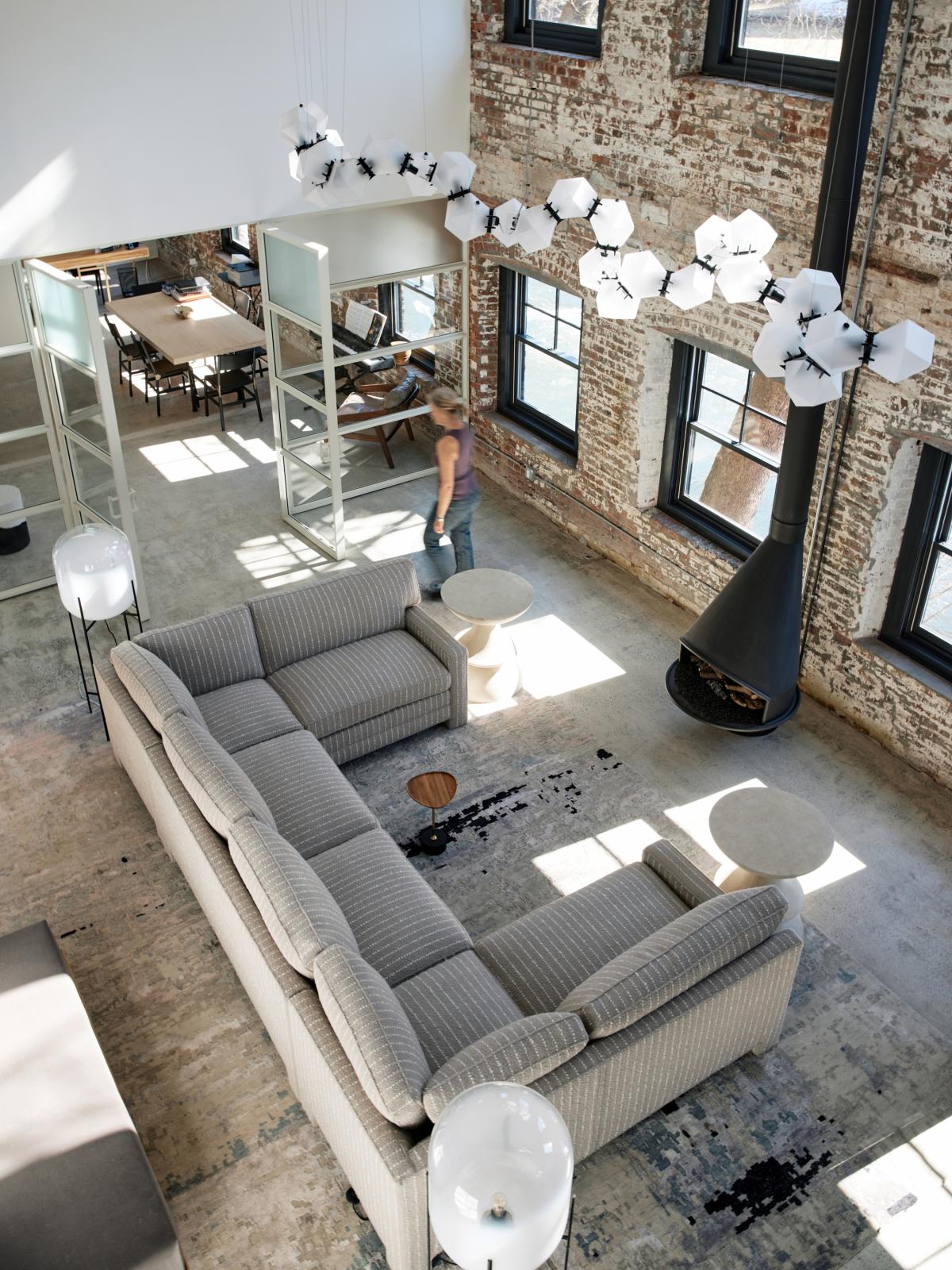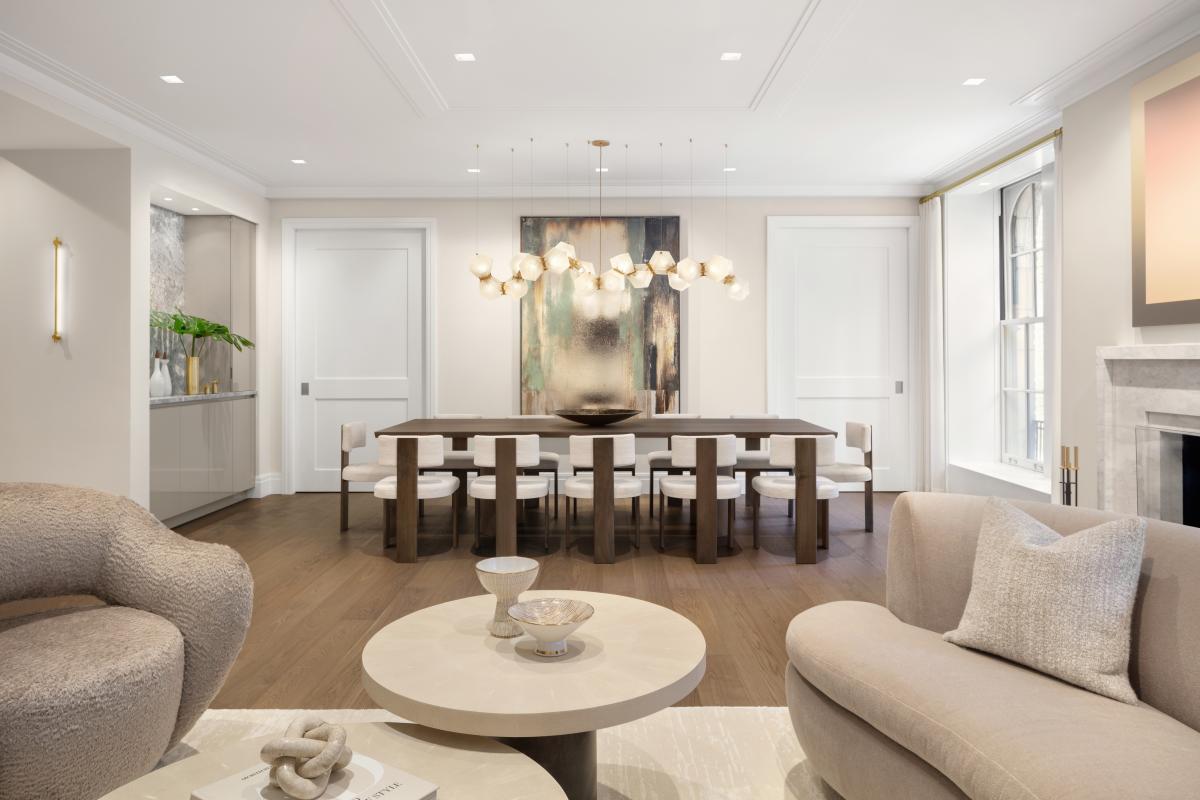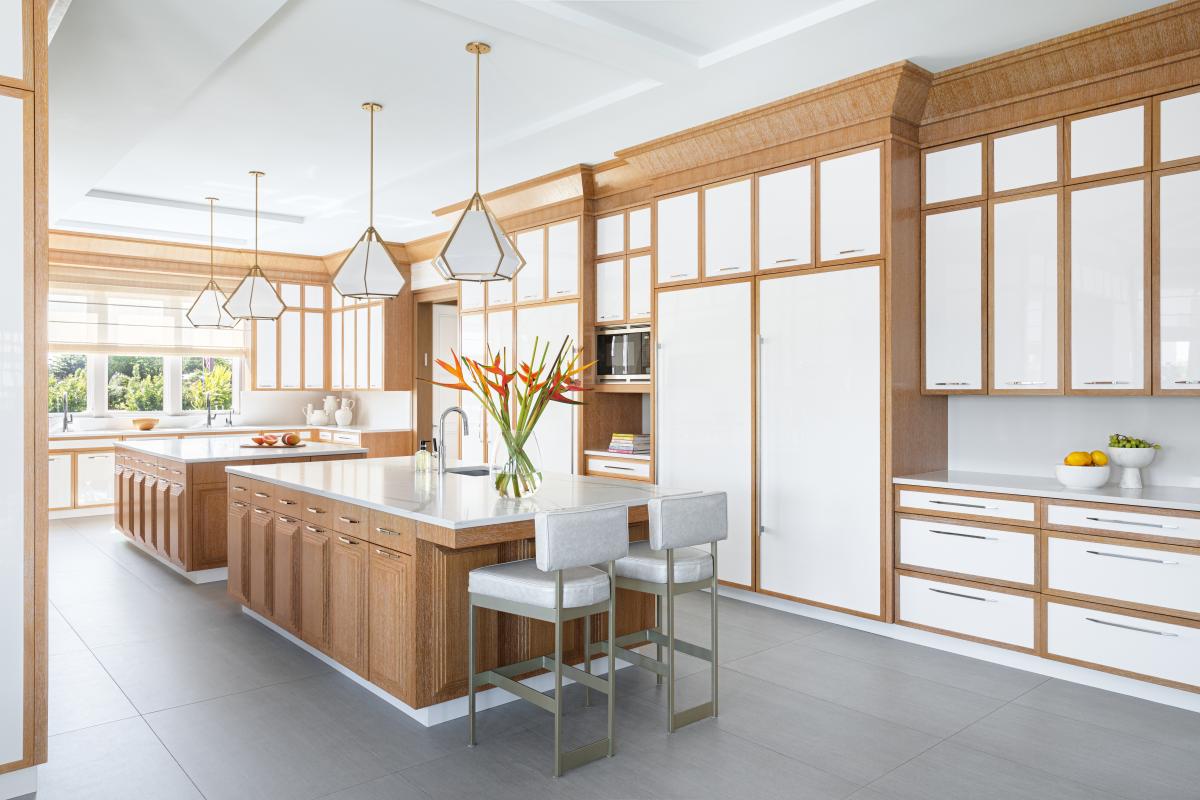Start building your dream
How to layer light in your home using contemporary lighting fixtures
10 May 2023
Interviews
Light is a fundamental part of your home, not only is it an integral part of interior design but also an opportunity to bring together function and art within your space. The right lighting is essential to both daily activity and routine, and also helps to balance the energy in your environment as well as assist positive sleep patterns.
Layering light, by combining different kinds of light, is how the optimum atmosphere will be achieved. We asked three interior designers from our design community how to layer lighting in a home to optimize an interior design scheme.
Layering light: the process
Before adding more lighting into a space, it’s important to understand what lighting already exists. Elizabeth Strianese, founder and design director of New York-based Elizabeth Strianese Interiors, said: “When first entering a space I’m generally looking for existing light sources such as windows, and taking note of any overhangs outside that would impede natural light. I’m also focussed on what direction the room is facing, any vistas that should be maintained, obscured or drawn attention to, and what human-made light sources already exist, be it recessed lighting, ceiling junction boxes or current fixtures.”
Once this part of the process has been achieved, strategic placement of lighting is fundamental in creating the right tone and mood. Jack Ovadia, Principle of Ovadia Design Group, comments: “The right lighting can make all the difference when it comes to setting the mood in a room. To create a warm and inviting ambience in your living space, don't be afraid to have some fun with your lighting choices. Using lighting fixtures as an accessory adds character, and to really elevate any space, you can even consider the color temperature of bulbs to control the mood and aesthetic.”
How to layer light
For Jack, blending light forms and fixtures is a craft when looking to balance versatility, flexibility as well as trying to bring your own personality into the space. “If you're looking to add charm to your home, then layering light is the way to go. A well-lit room should have a mix of overhead lighting, task lighting, and ambient lighting. The key components to achieving this are balance, purpose, and aesthetics. Each type of lighting serves a different purpose and allows you to create depth and dimension in your space.”
Elizabeth adds, “be sure there are light sources at every level of a room, that includes ceiling lights that might give ambient light, sconces which might help highlight a portal or a focal wall, and table and floor lamps for spot sources. Nowadays, we also focus on making sure the temperature of the light in a room is varied because we're all so used to incandescent lighting which is in the warmer range of the Kelvin scale, we try to include light sources in that temperature range for familiarity. But including some whiter elements from LED's (closer to 3500 Kelvin) helps brighten up a room. If everything is too warm, a room feels dingy, but if everything is too cool, it can feel like an operating room. The mix needs to be ‘just right’”.
Elizabeth continues, “it’s important to focus on what is actually exciting within your home. I always suggest to pare down, most people have too much (and too big) furniture, and too much ‘stuff’. I'm equally guilty of the ‘stuff’ problem. I think a great start to trying to make your living space more inviting would be to take everything out of the room, and then reintroduce the things you own slowly and in new locations starting with the things you love. If you no longer love something, give it away or donate it.”
Selecting the right lighting
We asked what first catches their eye from a designer’s perspective when they walk into a room, Kathryn Eisberg, founder and CEO of New York design firm KE Design, said: “For me personally, my eyes go directly to beautiful lighting, it is the first thing that catches my eye and really can give that ‘aha’ moment and transform any space. It’s therefore important to invest in beautiful lighting, and to have more than one source of light in a room, such as sconces, chandeliers, standing lights etc, because every piece gives off different forms of light. Of course, it is important for all to be on dimmers so you can control the level of light and make it more ambient.”
For Elizabeth it’s the use of a contemporary chandelier that elevates a space, “a great chandelier can set the tone of an entire room. Not only is it one of the necessary layers of light sources, especially in a dining room, it can do double duty as sculpture as well. A chandelier selection says a lot about the homeowner. You can make a home feel like The Plaza Hotel, a roadside saloon or like MOMA instantaneously; a chandelier is a statement piece.”
When considering specific contemporary light fixtures for layering light, Elizabeth adds: “Sconces are a designer's best friend! While I'm a fan of recessed lighting (gasp!), a bathroom must have sconces as well. If you've ever had an opportunity to look at yourself in a mirror with just an overhead light versus a wall sconce, appropriately located at eye level on either side of a mirror, you know why. Overhead lighting casts shadows that make it hard to see yourself clearly in a mirror. Putting on makeup, or trying to shave with only an overhead source of light is much harder than with side sconces. We also love to use sconces to punctuate an opening and to flank something special.”
Special thanks to our contributors. Discover their work and latest projects by visiting their websites:
Explore our sconce, chandelier and pendant lighting collections.





